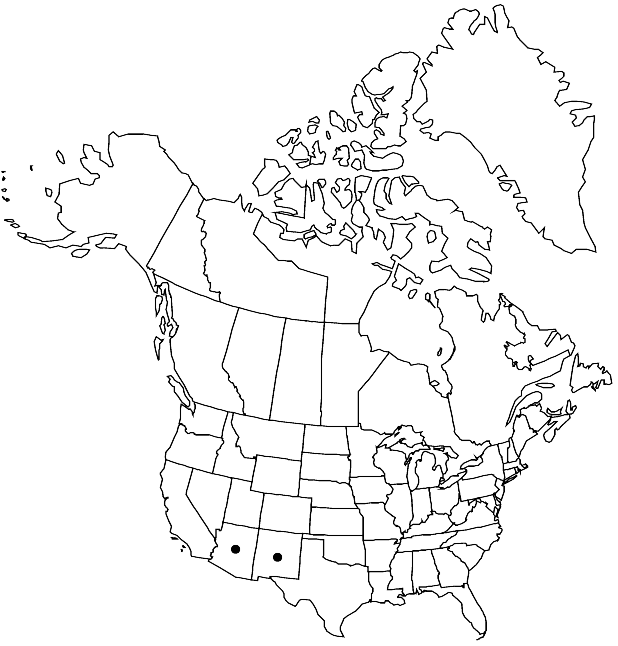Physaria gooddingii
Novon 12: 323. 2002.
Annuals or biennials; without caudex, (cespitose); densely pubescent, trichomes (sessile or short-stalked), few-rayed, rays (ascending or erect), simple or infrequently furcate near base, (long and slender, sometimes with U-shaped notch on one side, smooth or finely tuberculate). Stems several from base, erect (and stout) or outer ones decumbent, (unbranched or branched, stiff and densely foliate, sterile leaf-bearing branches sometimes present), to 4 dm. Basal leaves: blade obovate or elliptic, to ca. 3 cm, margins sinuate or shallowly dentate. Cauline leaves: (proximal usually shortly petiolate, distal sessile); blade obovate to broadly elliptic, 1–3 cm, margins sinuate or shallowly toothed. Racemes dense, compact, (elongated in fruit). Fruiting pedicels (recurved, curved or sigmoid), somewhat expanded apically. Flowers: sepals elliptic or narrowly elliptic or oblong, (3.8–) 4.5–5.5 mm, (lateral pair cucullate, very convex, median pair tapering to base, thickened apically, cucullate, often slightly keeled); petals cuneate, 6.5–8 mm, (slightly expanded at base, margins sinuate, apex retuse or entire). Fruits (sessile or substipitate), oblong or broadly elliptic, compressed (latiseptate), 5–8 mm; valves pubescent, trichomes spreading, sparsely pubescent inside; ovules 4–6 per ovary; style 3–5 mm. Seeds flattened.
Phenology: Flowering Jun–Sep.
Habitat: Mountainous areas, open areas in pinyon-juniper and ponderosa pine forests
Elevation: 1800-2300 m
Discussion
Physaria gooddingii (found in the mountains of Catron, Sierra, and western Socorro counties, New Mexico, and in Greenlee County, Arizona) is similar to 9. P. aurea (found farther east), but differs in having trichomes with ascending or erect rays (rather than appressed) and fruits that are strongly latiseptate (rather than not, or very little, compressed), a state that is infrequent in the genus.
Selected References
None.
Lower Taxa
"not" is not a number. "elongated" is not a number."thick" is not a number."dm" is not declared as a valid unit of measurement for this property.
